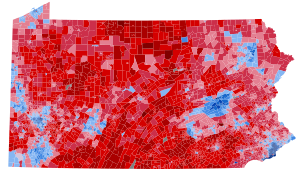
The 2008 United States House of Representatives elections in New York were held on November 4th, 2008, to elect the 29 U.S. representatives from the State of New York, one from each of the state's 29 congressional districts. state of New York in the United States House of Representatives. New York has 29 seats in the House, apportioned according to the 2000 United States Census. Representatives are elected for two-year terms; those elected will serve in the 111th Congress from January 4, 2009 until January 3, 2011. The election coincided with the 2008 U.S. presidential election in which Democrat Barack Obama defeated Republican John McCain by a wide margin.
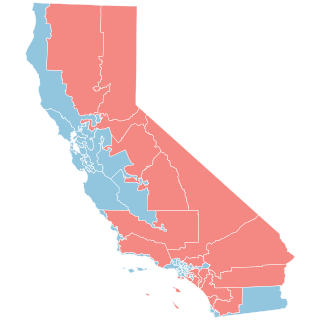
The 2008 United States House of Representatives elections in California were held on November 4, 2008 to determine who would represent California various congressional districts in the United States House of Representatives. In the 111th Congress, California has 53 seats in the House, apportioned accordingly after the 2000 United States Census. Representatives are elected to two-year terms; those elected will serve in the 111th Congress from January 3, 2009 to January 3, 2011. The election coincides with the United States presidential election as well as other elections in California.
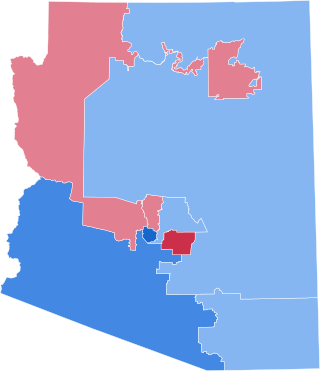
The 2008 congressional elections in Arizona were held on November 4, 2008, to determine who would represent the state of Arizona in the United States House of Representatives, coinciding with the presidential election. Representatives are elected for two-year terms; those elected would serve in the 111th Congress from January 4, 2009, until January 3, 2011.

The 2008 United States House of Representatives elections in Arkansas were held on November 4, 2008 to determine who will represent the state of Arkansas in the United States House of Representatives. Arkansas has four seats in the House, apportioned according to the 2000 United States Census. Representatives are elected for two-year terms; those elected will serve in the 111th Congress from January 4, 2009 until January 3, 2011. The election coincides with the 2008 presidential election.

The 2008 congressional elections in Colorado were held on November 4, 2008 to determine who will represent the state of Colorado in the United States House of Representatives, coinciding with the presidential and senatorial elections. Representatives are elected for two-year terms; those elected served in the 111th Congress from January 3, 2009 until January 3, 2011.

The United States House of Representative elections of 2008 in North Carolina were held on November 4, 2008, as part of the biennial election to the United States House of Representatives. All thirteen seats in North Carolina, and 435 nationwide, were elected to the 111th United States Congress. The party primary elections were held on May 6, 2008.

The 2008 congressional elections in Pennsylvania was held on November 4, 2008, to determine who will represent the state of Pennsylvania in the United States House of Representatives. Pennsylvania has 19 seats in the House, apportioned according to the 2000 United States Census. Representatives are elected for two-year terms; those elected will serve in the 111th Congress from January 4, 2009, until January 3, 2011. The election coincides with the 2008 U.S. presidential election.

The 2008 congressional elections in Kentucky were held on November 4, 2008, to determine who would represent the state of Kentucky in the United States House of Representatives. Kentucky has six seats in the House, apportioned according to the 2000 United States Census. Representatives are elected for two-year terms; those elected will serve in the 111th Congress from January 4, 2009, until January 3, 2011. The election coincides with the 2008 U.S. presidential election.

The 2008 congressional elections in Ohio were held on November 4, 2008, and determined who will represent the state of Ohio in the United States House of Representatives. The primary election was held on March 4, 2008.

The 2008 congressional elections in Georgia were held on November 4, 2008, to determine who would represent the state of Georgia in the United States House of Representatives, coinciding with the presidential and senatorial elections. Representatives are elected for two-year terms; those elected will serve in the 111th Congress from January 3, 2009, until January 3, 2011.

The 2008 United States House of Representatives Elections in Florida were held on November 4, 2008 to determine who would represent the state of Florida in the United States House of Representatives. Representatives are elected for two-year terms; those elected served in the 111th Congress from January 4, 2009 until January 3, 2011. The election coincided with the 2008 U.S. presidential election.

The 2010 United States House of Representatives Elections in Florida were held on November 2, 2010 to determine who would represent the state of Florida in the United States House of Representatives. Representatives are elected for two-year terms; those elected served in the 112th Congress from January 2011 until January 2013. Florida had twenty-five seats in the House, apportioned according to the 2000 United States Census, but would soon gain two more congressional seats in 2012.

The 2010 congressional elections in New York were held on November 2, 2010 to determine representation from the state of New York in the United States House of Representatives. New York had 29 seats in the House. Representatives are elected to two-year terms.

The 2010 congressional elections in Maryland were held on November 2, 2010, to determine who will represent the state of Maryland in the United States House of Representatives. Maryland has eight seats in the House, apportioned according to the 2000 United States Census. Representatives are elected for two-year terms; those elected served in the 112th Congress from January 3, 2011 until January 3, 2013. The party primaries were held September 14, 2010.

The 2010 United States House of Representatives elections in Tennessee was held on November 2, 2010, to elect the nine U.S. representatives from the state of Tennessee, one from each of the state's nine congressional districts.
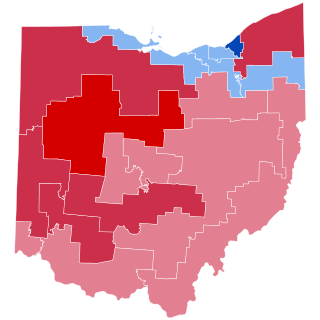
The 2010 congressional elections in Ohio was held on November 2, 2010. Ohio had eighteen seats in the United States House of Representatives, and all eighteen incumbent Representatives were seeking re-election in 2010. The election was held on the same day as many other Ohio elections, and the same day as House of Representatives elections in other states.

The 2010 congressional elections in Arizona were held on November 2, 2010, to determine who would represent the state of Arizona in the United States House of Representatives. Arizona had eight seats in the House, apportioned according to the 2000 United States Census. Representatives were elected for two-year terms; those elected were to serve in the 112th Congress from January 3, 2011 until January 3, 2013.

The 2010 congressional elections in Virginia were held November 2, 2010, to determine who will represent the state of Virginia in the United States House of Representatives. Representatives are elected for two-year terms; those elected served in the 112th Congress from January 2011 until January 2013.
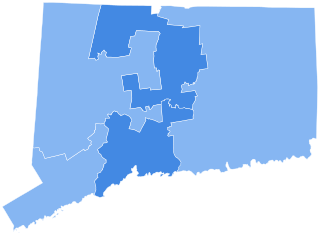
The 2010 United States House of Representatives elections in Connecticut took place on Tuesday, November 2, 2010 to elect the five Congressional representatives from the state, one from each of the state's five Congressional districts. The elections coincided with the elections of other federal and state offices, including governor, U.S. Senate, and state legislature races.

The 2010 Minnesota U.S. House of Representatives elections took place on November 2, 2010. All eight congressional seats that make up the state's delegation were contested. Representatives are elected for two-year terms; those elected will serve in the 112th United States Congress from January 3, 2011, until January 3, 2013.



